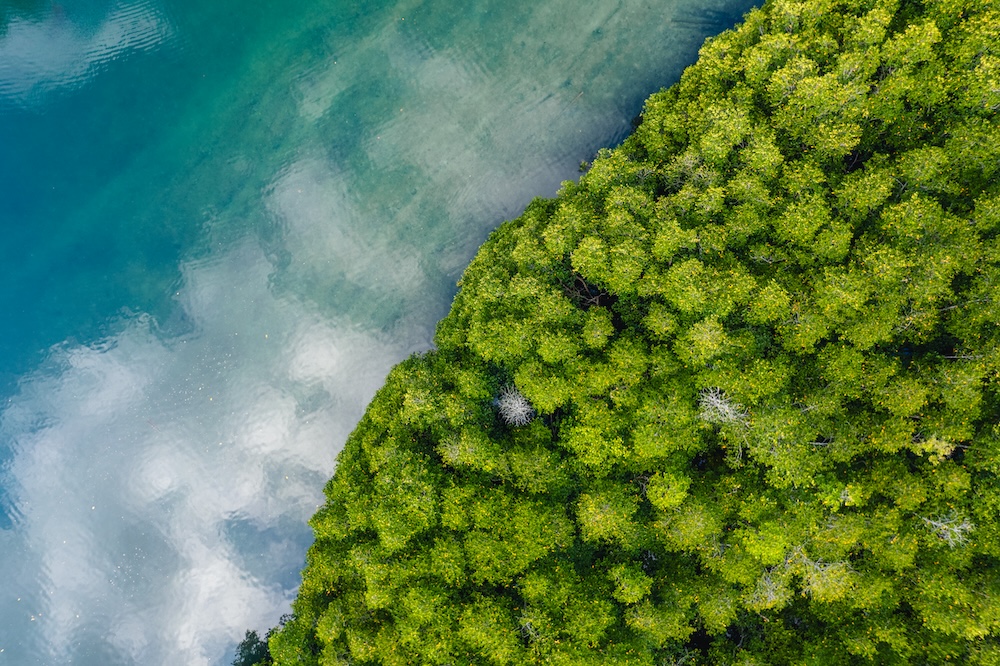Nature vs. Concrete — Who Wins When the Ocean Comes for Your Shoreline?
Picture this: a storm surge is barreling toward the coast. On one side, there’s a massive concrete wall designed to hold it back. On the other? A thick tangle of mangroves, roots tangled like nature’s own barbed wire.
Which one does a better job?
Spoiler: it’s not always the concrete.
As climate change intensifies storms, accelerates sea level rise, and eats away at coastlines, governments and communities are scrambling to protect what’s left. The question is no longer if we need coastal defense — it’s how we build it.
Enter the epic showdown: Mangroves vs. Seawalls.
What Are Seawalls, and Why Are We Obsessed with Them?
Seawalls are man-made barriers — typically concrete, steel, or rock — built to block waves, prevent erosion, and protect coastal infrastructure. They’re the architectural equivalent of saying, “Stay back, ocean.”
They’ve been around for centuries, and for good reason:
- They’re visible (aka politically satisfying)
- They deliver instant results
- They make waterfront investors feel safe
But here’s the thing: seawalls are a short-term fix with long-term baggage.
The Catch with Seawalls:
- They reflect wave energy rather than absorb it, which often causes increased erosion right in front of them (called “scour”)
- They create a false sense of security for builders and homebuyers
- They fail dramatically when overwhelmed — not gracefully
- They can block public beach access and damage local ecosystems
So while seawalls might save your boardwalk this year, they could doom your beach five years from now.
Meet the Mangroves: Nature’s Coastal Bodyguards
Mangroves aren’t just pretty trees with weird roots — they’re one of the most powerful natural defenses against coastal erosion and flooding.
They grow in tropical and subtropical intertidal zones, where saltwater meets land, forming dense forests with interlocking roots that:
- Dissipate wave energy
- Trap sediment to build new land
- Stabilize shorelines
- Provide habitat for fish, crabs, birds, and even carbon storage
And unlike a seawall, a healthy mangrove forest gets stronger over time. It adapts, regenerates, and expands.
Let’s call it what it is: a living seawall.
The Data Doesn’t Lie — Nature Is Winning
Multiple studies have proven that mangroves and other coastal ecosystems are often more effective (and far cheaper) than traditional seawalls:
- A 2020 study in Scientific Reports found that mangroves reduced wave heights by up to 66% across the first 100 meters of forest.
- In 2017, researchers calculated that mangroves prevent over $65 billion in flood damage each year globally.
- The World Bank found that nature-based solutions cost 30–50% less than gray infrastructure in many cases — with better long-term outcomes.
And mangroves come with co-benefits:
- Carbon sequestration
- Biodiversity protection
- Fisheries enhancement
- Eco-tourism potential
Seawalls? Not so much.
Why Don’t We Just Plant Mangroves Everywhere?
Ah, the million-dollar question. If mangroves are that amazing, why aren’t we planting them on every vulnerable coast?
Well… we should be. But there are limits.
Mangroves Require:
- Warm climates (mostly tropical and subtropical zones)
- Tidal flow and brackish water conditions
- Room to migrate inland as sea levels rise
- Protection from development and pollution
Plus, planting mangroves incorrectly (e.g., in the wrong soil or density) can actually harm ecosystems and waste funding.
So while mangroves are incredible, they’re not a one-size-fits-all solution. But in areas where they naturally belong? They should be your first line of defense.
When Seawalls Still Make Sense
To be fair, seawalls have their place — especially in urban environments where there’s no room to let nature take the wheel.
They can help:
- Protect roads, ports, and dense coastal cities
- Buy time while better systems are built
- Act as barriers where mangroves can’t grow (e.g., cold climates or deep water)
But seawalls should never be the only plan. They work best as part of a hybrid approach — reinforced with dunes, reefs, wetlands, and smart zoning.
Think of them as temporary armor — not a permanent cure.
The Best Coastal Defense Is a Smart Mix
Here’s the emerging consensus among climate experts and coastal engineers:
Nature + engineering = resilience
That means:
- Use mangroves and wetlands where possible to absorb and slow water
- Build breakwaters and reefs offshore to reduce wave energy
- Elevate homes and infrastructure rather than just blocking waves
- Let some areas flood intentionally (aka managed retreat)
- Stop building right on the edge of the water — seriously, stop
We need a paradigm shift away from domination (“build higher walls!”) and toward coexistence. The ocean isn’t going to listen to zoning laws.
Countries Already Betting on Mangroves
Some nations are leading the way:
- Indonesia has restored over 600,000 hectares of mangroves to fight erosion
- Mexico protects mangrove ecosystems as national defense infrastructure
- Bangladesh uses mangrove belts to protect millions from storm surges
- Fiji blends mangrove planting with climate migration strategies
They’re not just replanting trees. They’re building the future of coastal defense.
Final Thoughts: When the Waves Come, Roots Hold Strong
If seawalls are like shouting “No!” at the ocean, mangroves are more like whispering “Nice try” as they slow the wave to a crawl.
Yes, concrete has its moments. But nature has millennia of experience absorbing storms, shifting with the tides, and recovering after disaster. We’re just now remembering to trust it again.
So the next time someone brags about a shiny new seawall, ask them if they’ve considered hiring a forest instead.
The waves are coming either way. What you plant — or pour — now determines what survives.









Reader Interactions